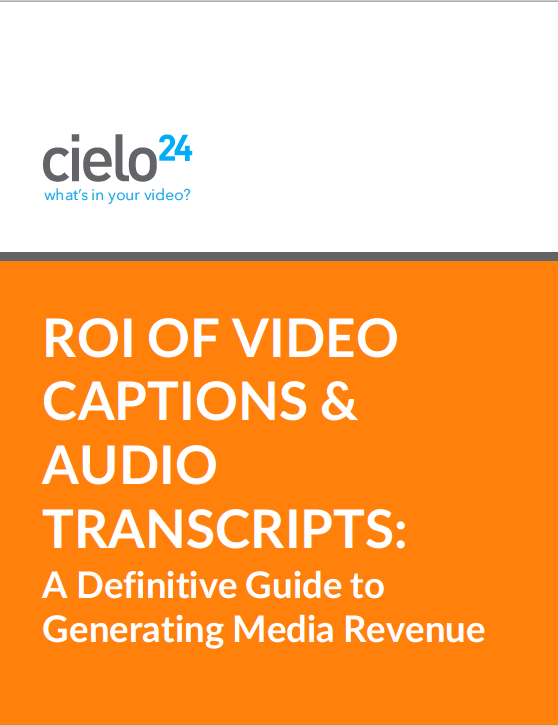Closed Captions vs. Subtitles: The Difference & Why You Need Both These terms are often…

Captions and Subtitles — Do You Know the Difference?
Captions and Subtitles — What’s the Difference?
Captions and subtitles are distinct but overlap in many ways. While both display text on the screen, the purpose for using each is different. Let’s taken a closer look at the differences and similarities.
The Differences Between Captions and Subtitles
Captions are a text version of the spoken part of a television, movie, or computer presentation. They are in the language of the medium rather than a translation to another language.
Captions can either be open or closed. Closed captions can be turned on or off with the click of a button. Open captions are different from closed captions in that they are part of the video itself and cannot be turned off.
Subtitles are translations for people who don’t speak the language of the medium. These accompany foreign films for example.
Standard subtitles assume the viewer hears the audio. Subtitles for the Deaf and Hard of Hearing are written for viewers who may not be able to hear the audio. SDHH contain information about background sounds and speaker changes, along with a translation of the script.
Different Purposes for Captions and Subtitles

Closed captioning was developed to aid individuals with hearing impairments. The Americans with Disabilities Act, Section 504 and 508 of the Rehabilitation Act, the FCC’s CVAA, and the international Web Content Accessibility Guidelines (WCAG 2.0) all require captions for multimedia. These laws and guidelines apply across government, education, entertainment, and business to prevent discrimination against people with disabilities.
While captions ensure accessibility, they are useful for a variety of other reasons. For example, captions allow viewers to follow the story when sound can’t be heard, either because of a noisy environment, such as the gym, or because of a sound-sensitive environment, such as a hospital. Even more prevalent these days, captions allow viewers to understand videos that show up on social media news feeds, which play the video on silent by default.
Subtitles, on the other hand, were developed to make multimedia available to viewers who may not speak the language used in the video. Globalization has increased the use of subtitles, with many video producers seeing the value in making content available in more than one language. Subtitles for the Deaf and Hard of Hearing take this one step further, providing accessibility to those with hearing disabilities in more than one language.
Why Successful Businesses Invest in Captions and Subtitles
Captions and subtitles are invaluable tools for audience expansion, viewer engagement, content retention, and improved video discovery and SEO.

Reaching new audiences is a cornerstone of business success. With captions, you add viewers to your audience who would normally be unable to fully comprehend the video because of hearing impairment. You also add in viewers who might have trouble processing auditory or speech components in media, as well as over a billion second or foreign language English speakers.
Subtitles take this even further by opening video content up to audiences around the world. On YouTube, 80% of the views come from outside the US. Companies that can reach a segment of online the population who speak a language other than English (over two billion people) will get the best return on their video investment. The entertainment industry especially benefits from this, with many top foreign films receiving prestigious awards in Hollywood and many television shows garnering global popularity.
Captions and subtitles also boost viewer engagement. Videos with captions receive a 40% spike in viewing and videos with both captions and subtitles experience an 80% increase in viewing. Internal tests at Facebook found that captioned video ads saw a 12% increase in engagement.
This engagement spurs another major benefit of captions and subtitles — SEO. Search engines reward quality content, and likes, shares, comments, and retweets all signal to search engines that you are creating quality content.
Even more important is the role subtitle and closed caption files play in SEO. These text versions of your media allow search engines to crawl the actual content in your videos — not just the title and description tags — and index the video accordingly. This makes your videos more easily discoverable which sets the cycle of increased reach and engagement back into motion.
Captioning Resources
Creating closed captions files is a technical process that might be challenging for some content providers. We recommend finding a 3rd party service to assist you in the creation of high-quality captions and subtitle files. Click here to read our post about How to Choose the Right Video Captioning Service. Below are captioning accessibility resources:




